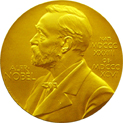
The immune system is an amazing yet ancient biological function that makes it possible for life to flourish on earth. All complex organisms have an immune defense system and without it, even a simple infection can be fatal. At the same time, the immune system can go out of control, attacking the body's own cells, which can make people very sick.
Thanks to the revolutionizing work of three scientists, the key principles that activate our immune response are now known. These contributions have already triggered an explosion of research to identify new ways to harness the immune system.
This year's Nobel for Physiology or Medicine was awarded to these scientists. One half of the $1.4 million prize was split between Drs. Bruce Beutler and Jules Hoffmann. The other half went to Dr. Ralph Steinman, who, sadly, died of pancreatic cancer three days before the award was announced.
The immune system can be divided into two parts: innate immunity and adaptive immunity. Innate immunity is the first line of defense against the countless microbes that threaten to invade daily. These immune cells literally engulf the invaders and trigger inflammation that helps to block an assault. But how does this cellular police force recognize an invader? Beutler and Hoffmann found the answer on the surface of certain immune cells. These cells have sensors called Toll-like receptors or TLRs that can recognize certain molecules associated with microbes.
Hoffman found that by mutating the gene that produces TLRs, the immune system cannot defend effectively against pathogens. Beutler, however, showed a more sinister side of these receptors. He found that over stimulating TLRs leads to out of control inflammation that can cause septic shock, a potentially fatal condition.
Innate immunity leads to adaptive immunity, which activates T-cells and B-cells. They not only destroy infected cells, but also develop immunologic memory, which mobilizes an even more powerful defense should the same microbe attack again.
But how does the body know when to start producing T-cells? That's where Steinman's work is essential. In 1973, he discovered a cell that he called the dendritic cell. In follow-up experiments, his team noticed the presence of dendritic cells correlated with a heightened response in T-cells. Further tests showed when the innate immune system is activated, it sends out signals that are picked up by dendritic cells. That in turn activates the T-cell response.
The work of these three scientists gave the research community the key to understanding immune activation. The knowledge has already produced an eruption of research into new treatments for everything from infections to inflammatory disease and even cancer.
More Information
Portrait of the 2011 Nobel Laureates (video - 56 minutes)
A video presentation of the stories of the thirteen men and women awarded the 2011 Nobel Prizes.
The Nobel Prize Award Ceremony 2011 (video - 89 minutes)
Video presentation of the Nobel Prize Award Ceremony at the Stockholm Concert Hall in Sweden, December 10, 2011.
The Immune System: In Defense of our Lives
A nice overview of the immune system and how it functions to protect us from disease.
"The human body is constantly engaged in a bitter internal war against vast armies of microscopic enemies. Pathogens ' be they bacteria, parasites, fungi or viruses ' will seek any means possible to broach our bodies' defences; they will enter through wounds, or through the mouth as we swallow, or even when we breathe in."